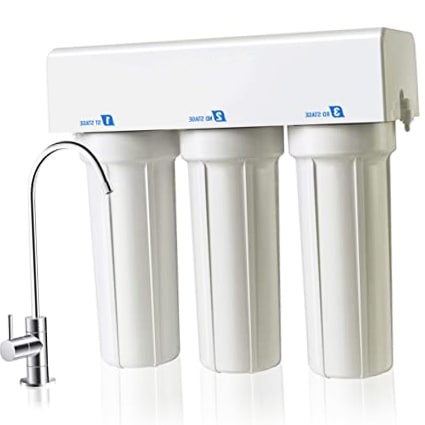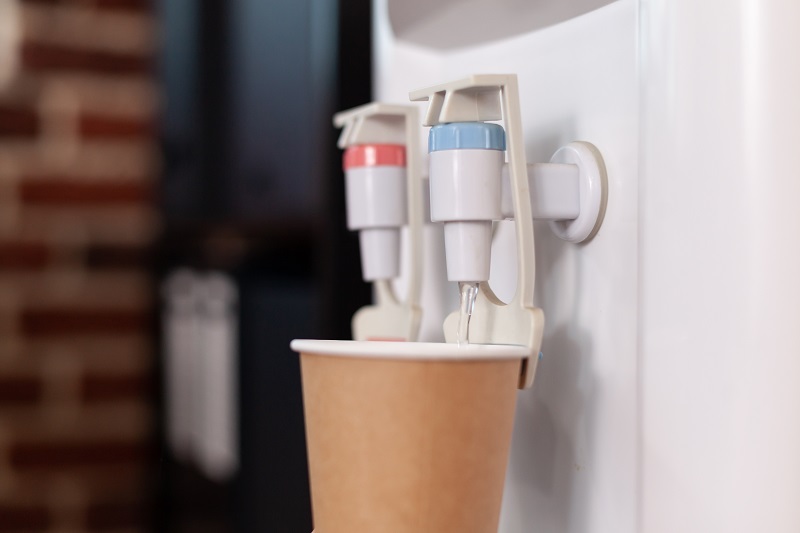Just like we take care of our bodies, we need to take care of the water we put into them. While tap water is our primary source of hydration, it may sometimes contain impurities or unwanted elements. That’s why water purifiers are important. Water purifiers are devices that remove impurities, contaminants, and any unpleasant flavors or smells in the water. They are made to make clean and fresh water accessible to everyone.
Now, with so many purifiers available, choosing the right one can feel overwhelming. But don’t worry! This blog will explore different purifier types, functions, and prices. We will also help you pick the ideal one for your unique needs. Get ready to discover the world of water purification to ensure that your home has the cleanest, healthiest water.
Investing in Your Health: The Benefits of Safe and Clean Drinking Water
Water purifiers offer a wide range of advantages. Most importantly, they help enhance overall health. They can help strengthen the immune system and decrease the likelihood of waterborne illnesses by removing harmful bacteria and dangerous minerals.
In addition to its health benefits, you no longer have to tolerate unpleasant tastes or the smell of chlorine. Water purifiers guarantee that you have access to fresh and clear water that is truly satisfying to drink. This can even help you drink more water and stay properly hydrated.
Beyond Health: Unleashing Additional Benefits of Water Purifiers
Moreover, using water purifiers is both eco-friendly and budget-friendly. By buying a filter once, you can avoid buying bottled water and reduce plastic waste.
One more benefit of water purifiers is that they can increase the lifespan of household appliances. The minerals present in hard water can accumulate in dishwashers and coffee makers, causing performance issues and reducing their lifespan. By using purified water, you can prevent this buildup and ensure that your appliances continue to work for a longer period.
The Science Behind Choice: Why Water Purifiers Come in Many Forms
If all purifiers are made to ensure safe and clean drinking water, then why are there so many options available?
The answer lies in understanding the science of water and the specific challenges faced by different water sources. Different water quality problems require specific filtration methods. Water purifiers come in a variety of types to tackle these issues. By using different filtration technologies, water purifiers effectively deal with these challenges.
From RO to UV Systems: Exploring the Diverse World of Water Purifiers
Now that you have enough information about the benefits of water purifiers and the reason behind their diversity, let’s take a close look at different types of purifiers, their function, and the typical cost of each type.
1. Reverse Osmosis (RO) Systems: The All-Encompassing Defender
Reverse osmosis (RO) systems are a popular choice for home water filtration. They work by using pressure to push your tap water through a semi-permeable membrane. This membrane only allows water molecules to pass through, trapping contaminants on the other side. The result is cleaner, fresher-tasting drinking water.
RO filtration is effective at removing a wide range of impurities, including chlorine, lead, arsenic, and fluoride. This can be beneficial for those who want to improve the taste of their water or reduce their exposure to harmful contaminants. However, there are a couple of minor drawbacks to consider. Firstly, RO systems can waste a significant amount of water during filtration. Secondly, the process may remove minerals that can be beneficial to health.
The cost of an RO system can vary depending on the brand, features, and capacity. Generally, they range from around $100 to $500 for under-the-sink units.
2. Distillation Systems: The Classic Approach
Distillation water purifiers stimulate the natural water cycle to create purified drinking water. They boil the tap water and transform it into vapor. This vapor rises, leaving behind contaminants like minerals, chlorine, and even some bacteria and viruses. The vapor is then collected and condensed back into liquid form. The outcome is very pure water.
Distillation is a highly effective method for removing a wide range of impurities, making it a good choice for people with compromised immune systems or those who want extremely pure drinking water. However, there are a couple of things to consider. Distillation is energy-intensive as it involves boiling water. Additionally, distillation removes all minerals from the water, which can be beneficial for some but can also be a drawback for those who prefer mineral content in their drinking water.
Distillation systems can range in price depending on size and features. Generally, countertop models cost around $100 to $300.
3. Ultrafiltration (UF) Systems: The Streamlined Defender
Ultrafiltration (UF) systems use a physical barrier to remove contaminants from your water. It stimulates a colander with incredibly fine holes that only allow water molecules to pass through while blocking larger unwanted bacteria, viruses, and parasites. UF membranes achieve this by using tiny pores that physically trap these contaminants.
UF systems offer several benefits. They are effective at removing harmful microorganisms and can improve the taste of your water by removing unpleasant smells and cloudiness. Additionally, UF filtration is less energy-intensive compared to reverse osmosis systems.
However, UF systems have some limitations. They typically don’t remove dissolved contaminants like minerals or chlorine. Furthermore, the UF membranes need periodic replacement to maintain effectiveness, which adds to the cost of ownership.
In terms of affordability, UF systems are generally budget-friendly. Under-the-sink models typically range from $100 to $300, making them a cost-effective option for those seeking cleaner, better-tasting drinking water.
4. Activated Carbon Filters: The Taste and Odor Trapper
Activated carbon filters improve the taste and smell of water by acting like tiny sponges for impurities in water. These filters contain a bed of highly porous carbon that works like a magnet for chlorine, unpleasant odors, and some organic compounds. As water passes through the filter, these contaminants get trapped within the vast network of pores inside the carbon.
The benefits of activated carbon filters are clear: cleaner, better-tasting water at a relatively inexpensive cost. They are affordable and require minimal maintenance, making them a popular choice for many households.
However, it’s important to note that activated carbon filters have limitations. They don’t target a wide range of contaminants, such as bacteria, viruses, or minerals. Additionally, their effectiveness weakens over time as the carbon becomes saturated with contaminants and needs to be replaced.
Replacement cartridges for activated carbon filters are generally quite affordable, typically costing between $10 and $50, depending on the size and brand. So, while they may not be a complete water filtration solution, they are a simple and cost-effective way to improve the taste and odor of your drinking water.
5. Ultraviolet (UV) Light Purifiers: The Germ Zapper
Ultraviolet (UV) light purifiers zap contaminants in water with light! They use ultraviolet light (specifically UV-C light) to target the DNA of microorganisms like bacteria, viruses, and parasites. This disrupts their DNA and renders them inactive, unable to reproduce.
UV light purification offers several benefits. It’s a quick, chemical-free method that removes harmful microorganisms without changing the taste or odor of water. Additionally, UV light purifiers are typically compact and easy to install.
However, there are a couple of limitations to consider. UV light only disinfects the water that flows directly through the unit and doesn’t have a lasting effect. Also, UV light doesn’t remove dissolved contaminants like minerals or chlorine.
The cost of UV light purifiers can vary depending on size and features. Generally, under-the-sink models range from $50 to $200, making them a cost-effective option for disinfection.
Understanding Your Options: Choosing the Right Purifier for Your Needs
Understanding your water quality concerns, your budget, and your desired level of filtration is crucial for selecting the right purifier. Here’s a quick guide to help you choose the suitable choice for your house:
- For comprehensive purification: RO systems are the best choice.
- For areas with severe water quality issues: Distillation offers a reliable solution.
- For a balance between effectiveness and affordability: Consider UF systems.
- For improving taste and odor: Activated carbon filters are a good option.
- For eliminating bacteria and viruses: UV light purifiers excel in this area.
The Bottom Line on Clean Water:
Now you have the knowledge to choose the perfect fit for your needs you can enjoy the peace of mind that comes with clean, refreshing water. Remember consulting with a water treatment professional can help you assess your specific water quality and recommend the most suitable purifier for your needs. With the right knowledge and water purifier, you can ensure a safe and refreshing glass of water for yourself and your family.
Rely on our team of water purification experts to assist you in exploring your choices and finding the ideal solution. Get a free consultation and satisfy your need for clean water today. Reach out to us at Canadian Choice Home Services now.

FAQs about Types of Water Purifiers
Installation isn’t required for all. Simple options like pitcher filters or faucet-mounted units are DIY-friendly. Complex systems like RO or whole-house units typically require professional installation.
As previously mentioned in the blog, for lead & chlorine, consider Reverse Osmosis or Activated Carbon filters!

